
Paintings "Nude painting"
Nude painting always illustrates undressed, naked humans. The subject of the nude painting is developed from the movement and proportion studies in the academic art training. Up until the late 19th Century nude painting was bound by strict standards in art training. An example of this is the Birth of the Venus by Cabanel or the paintings of Albrecht Dürer or Leonardo da Vinci. Merged into a literary, mythological or religious context, the exposed female bodies corresponded with the decor of the decorous art; in this way they served the voyeuristic, but morally legitimate interest. While Ingres' classic Odalisques under the guise of an imaginary exoticism formed the scene for the ideal female nude still in representative form, nude art experienced a profound change with the introduction of Manets Olympia, in the year 1865. The picture not only shows a nude woman without any mythological or religious reference, but confronts the viewer with a prostitute, who shows herself self-confidently to the viewer. After the invention of photography which permitted nakedness to be fixed in detail, it was now also artists such as Manet, Courbet, Renoir or Degas who fixed the exposed female body on the canvas without consideration of the moral code. Thus the scenes and context of the nude representations became increasingly more varied, opener and more liberating. With Modigliani's nude series, the subject experienced a change again at the beginning of the 20th Century: Without individual tracts, his naked females are not only a symbol for form-nascent beauty, but also an open to view exhibition of sensuality. In the modern trend the nude painting of Gustav Klimt, Egon Schiele, Henri Matisse or Pablo Picasso continued its topicality.
-
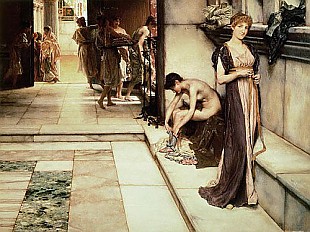 Sir Lawrence Alma-Tadema
An Apodyterium, 1886
Order Information
Sir Lawrence Alma-Tadema
An Apodyterium, 1886
Order Information
-
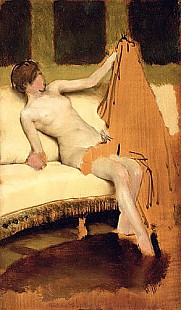 Sir Lawrence Alma-Tadema
Female Nude
Order Information
Sir Lawrence Alma-Tadema
Female Nude
Order Information
-
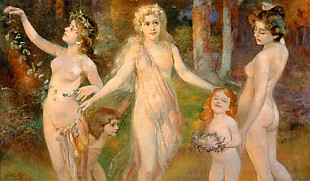 Paul Barthel
Dance in the wood
Order Information
Paul Barthel
Dance in the wood
Order Information
-
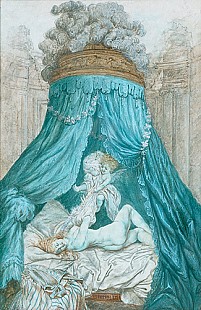 Pierre Antoine Baudouin
La chemise
Order Information
Pierre Antoine Baudouin
La chemise
Order Information
-
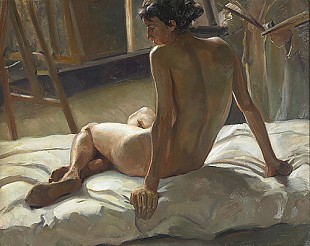 Richard Blume
Nude in atelier
Order Information
Richard Blume
Nude in atelier
Order Information
-
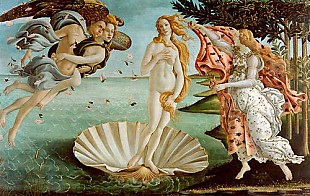 Sandro Botticelli
Birth of Venus (La nascita)
Order Information
Sandro Botticelli
Birth of Venus (La nascita)
Order Information
-
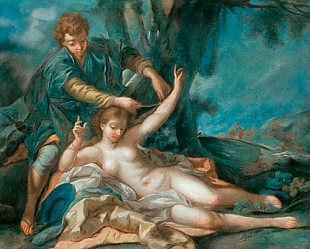 Francois Boucher
Amynthas frees Sylvia
Order Information
Francois Boucher
Amynthas frees Sylvia
Order Information
-
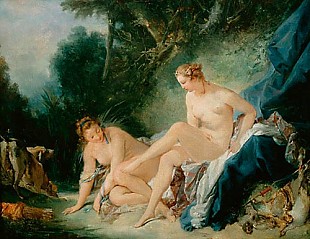 Marie Jeanne Boucher
Diana and Nymphe
Order Information
Marie Jeanne Boucher
Diana and Nymphe
Order Information
-
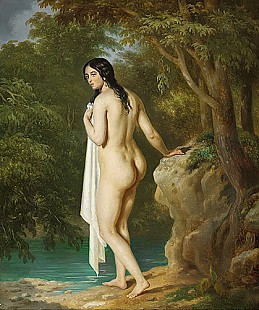 Adolphe William Bouguereau ( Umkreis )
Bathing female nude
Order Information
Adolphe William Bouguereau ( Umkreis )
Bathing female nude
Order Information
-
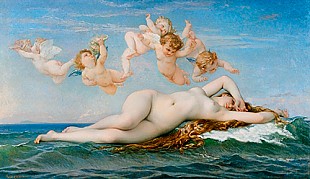 Alexandre Cabanel
Birth of Venus
Order Information
Alexandre Cabanel
Birth of Venus
Order Information
-
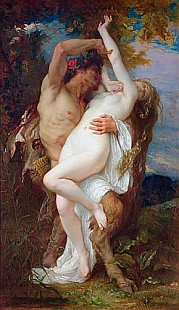 Alexandre Cabanel
Nymph Abducted by a Faun
Order Information
Alexandre Cabanel
Nymph Abducted by a Faun
Order Information
-
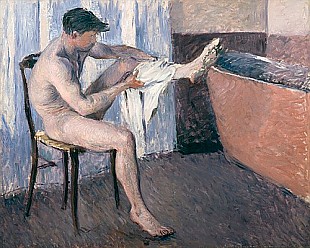 Gustav Caillebotte
Man drying his leg
Order Information
Gustav Caillebotte
Man drying his leg
Order Information
-
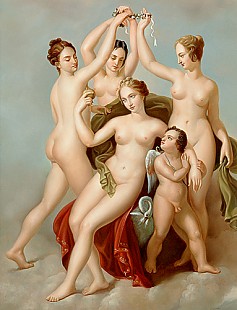 Guiseppe Cellini
Four graces
Order Information
Guiseppe Cellini
Four graces
Order Information
-
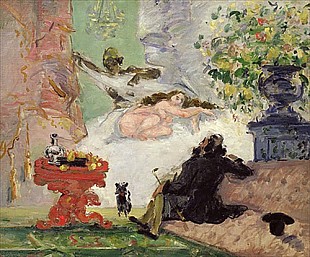 Paul Cézanne
A Modern Olympia
Order Information
Paul Cézanne
A Modern Olympia
Order Information
-
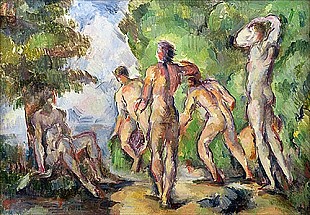 Paul Cézanne
Bathers
Order Information
Paul Cézanne
Bathers
Order Information
-
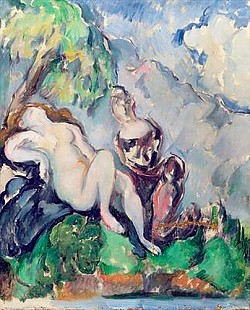 Paul Cézanne
Bathsheba
Order Information
Paul Cézanne
Bathsheba
Order Information
-
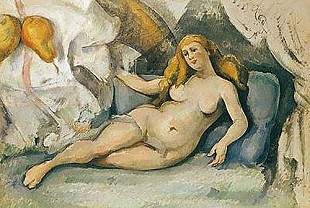 Paul Cézanne
Female Nude on a Sofa
Order Information
Paul Cézanne
Female Nude on a Sofa
Order Information
-
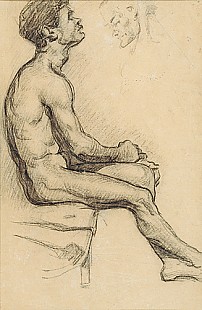 Paul Cézanne
Nude study of an african man
Order Information
Paul Cézanne
Nude study of an african man
Order Information
-
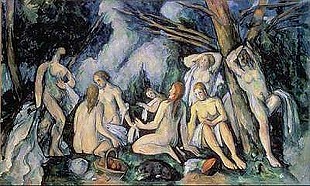 Paul Cézanne
Nudes in Landscape
Order Information
Paul Cézanne
Nudes in Landscape
Order Information
-
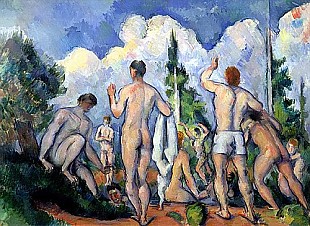 Paul Cézanne
The Bathers
Order Information
Paul Cézanne
The Bathers
Order Information
-
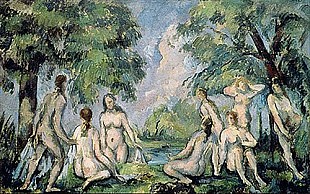 Paul Cézanne
The Bathers
Order Information
Paul Cézanne
The Bathers
Order Information
-
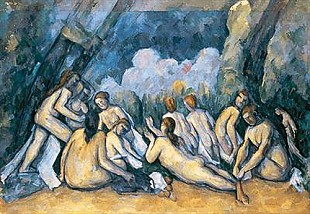 Paul Cézanne
The great bathers
Order Information
Paul Cézanne
The great bathers
Order Information
-
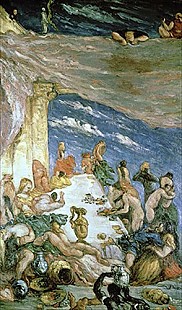 Paul Cézanne
The Orgy
Order Information
Paul Cézanne
The Orgy
Order Information
-
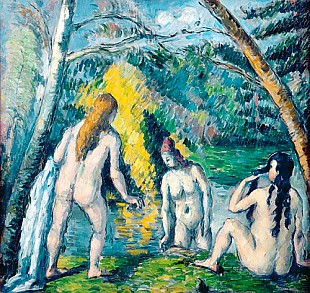 Paul Cézanne
Three bathers
Order Information
Paul Cézanne
Three bathers
Order Information
-
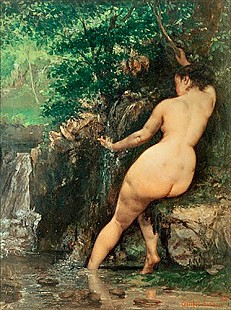 Gustave Courbet
Bather at the Source
Order Information
Gustave Courbet
Bather at the Source
Order Information
-
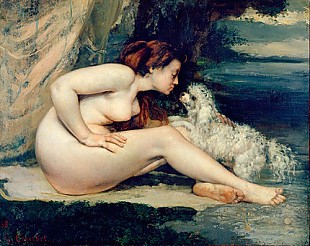 Gustave Courbet
Female Nude with a Dog
Order Information
Gustave Courbet
Female Nude with a Dog
Order Information
-
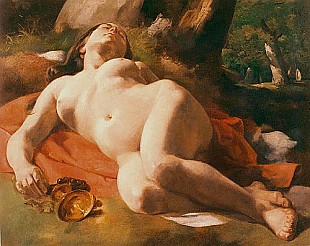 Gustave Courbet
La Bacchante
Order Information
Gustave Courbet
La Bacchante
Order Information
-
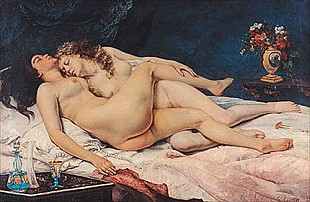 Gustave Courbet
Le Sommeil
Order Information
Gustave Courbet
Le Sommeil
Order Information
-
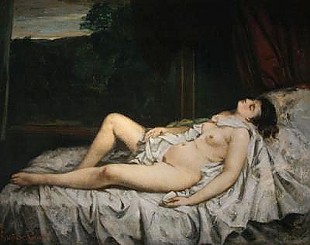 Gustave Courbet
Reclining Nude
Order Information
Gustave Courbet
Reclining Nude
Order Information
-
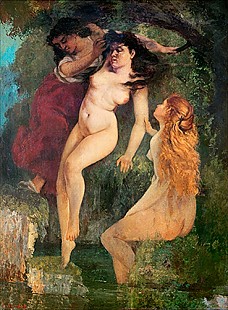 Gustave Courbet
Three Bathers
Order Information
Gustave Courbet
Three Bathers
Order Information
-
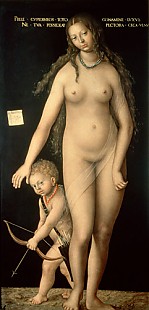 Lucas Cranach d.Ä.
Venus and Amor
Order Information
Lucas Cranach d.Ä.
Venus and Amor
Order Information
-
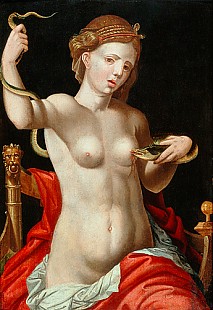 Lucas Cranach D.Ä. (Umkreis)
Cleopatra with the snake
Order Information
Lucas Cranach D.Ä. (Umkreis)
Cleopatra with the snake
Order Information
-
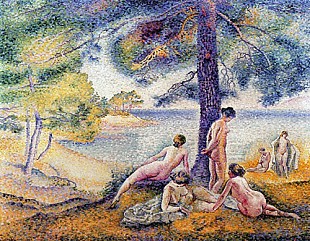 Henri-Edmond Cross
In the Shade
Order Information
Henri-Edmond Cross
In the Shade
Order Information
-
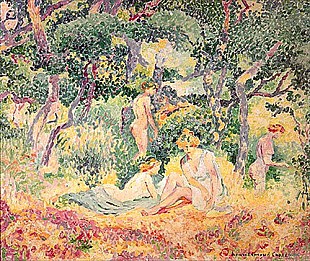 Henri-Edmond Cross
Nudes in a Wood
Order Information
Henri-Edmond Cross
Nudes in a Wood
Order Information
-
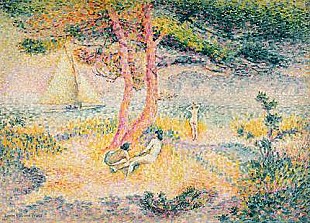 Henri-Edmond Cross
The Beach at St. Clair
Order Information
Henri-Edmond Cross
The Beach at St. Clair
Order Information
-
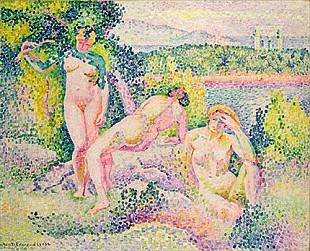 Henri-Edmond Cross
Three Nudes
Order Information
Henri-Edmond Cross
Three Nudes
Order Information
-
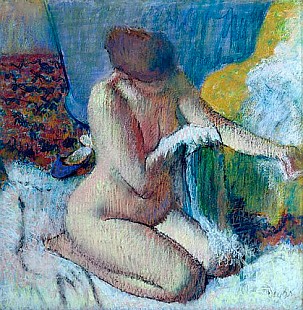 Edgar Degas
After the Bath
Order Information
Edgar Degas
After the Bath
Order Information
-
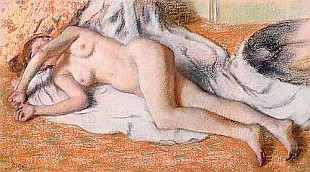 Edgar Degas
After the Bath or, Reclining Nude
Order Information
Edgar Degas
After the Bath or, Reclining Nude
Order Information
-
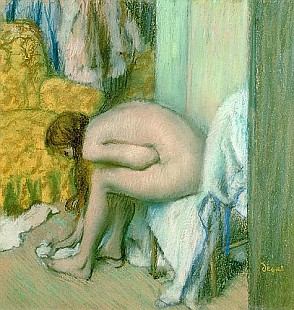 Edgar Degas
After the Bath, Woman Drying her Left Foot
Order Information
Edgar Degas
After the Bath, Woman Drying her Left Foot
Order Information
-
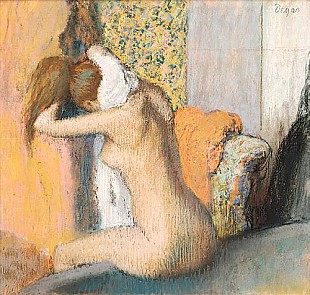 Edgar Degas
After the Bath, Woman Drying her Neck
Order Information
Edgar Degas
After the Bath, Woman Drying her Neck
Order Information
-
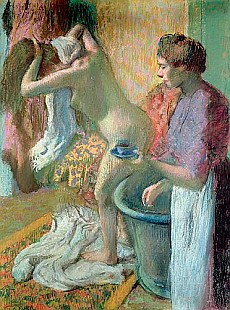 Edgar Degas
Breakfast after a bath
Order Information
Edgar Degas
Breakfast after a bath
Order Information
-
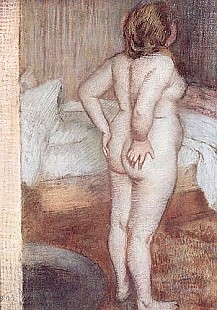 Edgar Degas
Standing Nude
Order Information
Edgar Degas
Standing Nude
Order Information
-
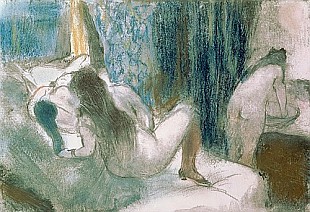 Edgar Degas
The Brothel
Order Information
Edgar Degas
The Brothel
Order Information
-
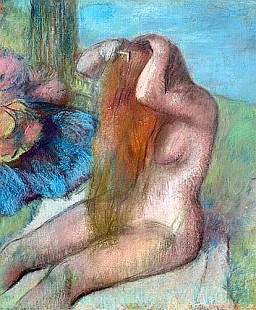 Edgar Degas
Woman doing her Hair
Order Information
Edgar Degas
Woman doing her Hair
Order Information
-
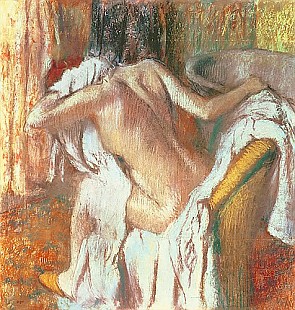 Edgar Degas
Woman drying herself
Order Information
Edgar Degas
Woman drying herself
Order Information
-
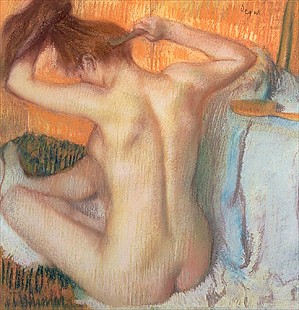 Edgar Degas
Woman in the bathroom
Order Information
Edgar Degas
Woman in the bathroom
Order Information
-
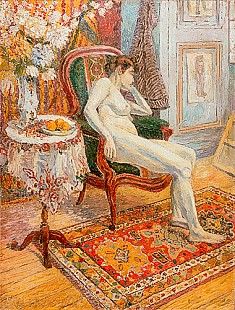 Eugen Delestre
Female Nude in the salon
Order Information
Eugen Delestre
Female Nude in the salon
Order Information
-
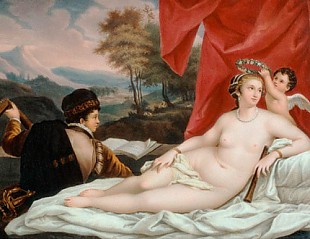 deutsch. Künstler
China painting, Venus with musican
Order Information
deutsch. Künstler
China painting, Venus with musican
Order Information
-
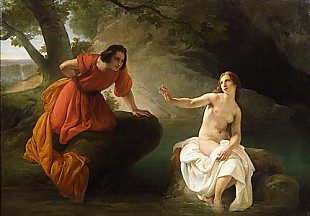 Deutscher Maler
Bathing nude girl and adolescent
Order Information
Deutscher Maler
Bathing nude girl and adolescent
Order Information
-
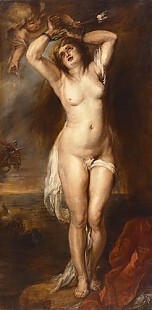 Deutscher Maler
Perseus liberats Andromeda
Order Information
Deutscher Maler
Perseus liberats Andromeda
Order Information
-
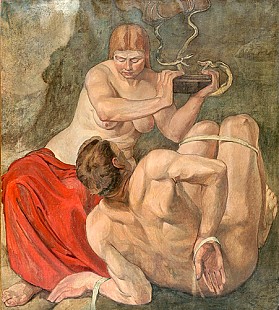 Deutscher Symbolist
Pandora
Order Information
Deutscher Symbolist
Pandora
Order Information
-
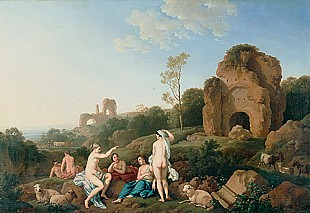 Christian Wilhelm Ernst Dietrich
Diana and the nymphs
Order Information
Christian Wilhelm Ernst Dietrich
Diana and the nymphs
Order Information
-
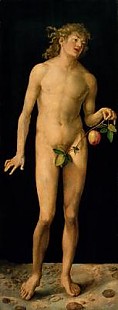 Albrecht Dürer
Adam
Order Information
Albrecht Dürer
Adam
Order Information
-
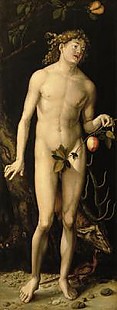 Albrecht Dürer
Adam
Order Information
Albrecht Dürer
Adam
Order Information
-
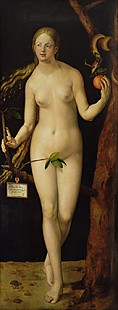 Albrecht Dürer
Eve
Order Information
Albrecht Dürer
Eve
Order Information
-
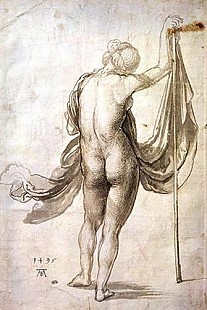 Albrecht Dürer
Nude Study or, Nude Female from the Back
Order Information
Albrecht Dürer
Nude Study or, Nude Female from the Back
Order Information
-
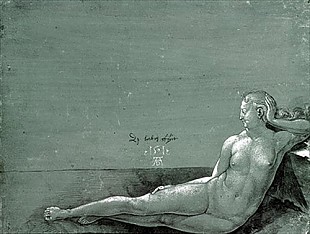 Albrecht Dürer
Reclining female nude
Order Information
Albrecht Dürer
Reclining female nude
Order Information
-
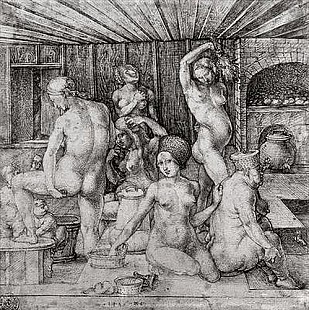 Albrecht Dürer
The Women's Bath
Order Information
Albrecht Dürer
The Women's Bath
Order Information
-
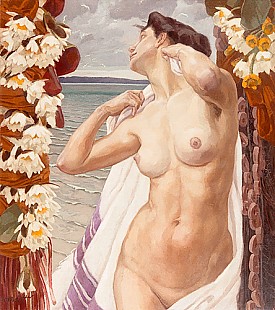 Reinhold Max Eichler
Nude at lake bank
Order Information
Reinhold Max Eichler
Nude at lake bank
Order Information
-
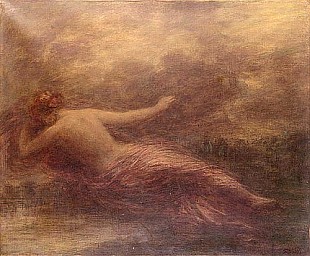 Thédore Fantin-Latour
Night
Order Information
Thédore Fantin-Latour
Night
Order Information
-
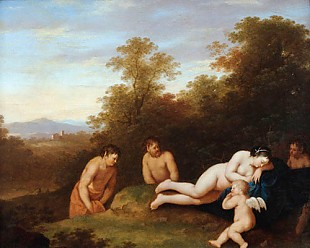 fläm. Mythologiemaler
Sleeping Venus
Order Information
fläm. Mythologiemaler
Sleeping Venus
Order Information
-
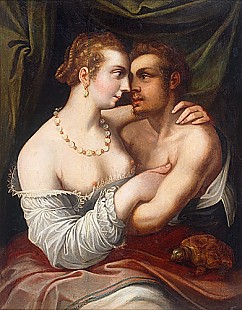 Franz Floris I.
Allegory of sense
Order Information
Franz Floris I.
Allegory of sense
Order Information
-
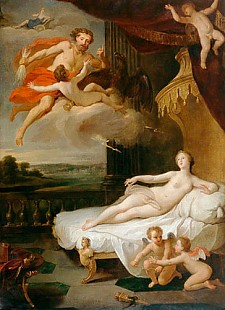 Französ. Maler
Jupiter and Semele
Order Information
Französ. Maler
Jupiter and Semele
Order Information
-
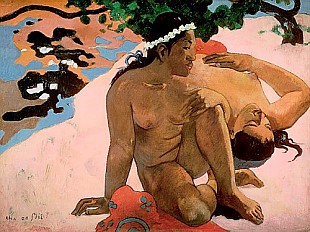 Paul Gauguin
Aha oe Feii?
Order Information
Paul Gauguin
Aha oe Feii?
Order Information
-
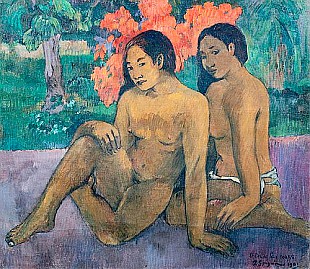 Paul Gauguin
And the Gold of their Bodies
Order Information
Paul Gauguin
And the Gold of their Bodies
Order Information
-
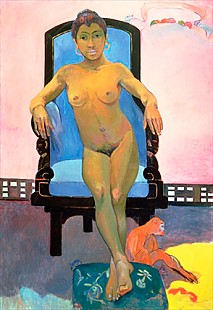 Paul Gauguin
Annah the Javanese
Order Information
Paul Gauguin
Annah the Javanese
Order Information
-
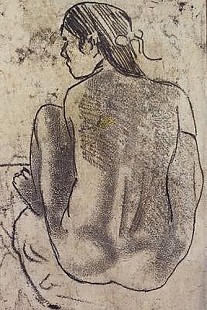 Paul Gauguin
Seated Tahitian Nude
Order Information
Paul Gauguin
Seated Tahitian Nude
Order Information
-
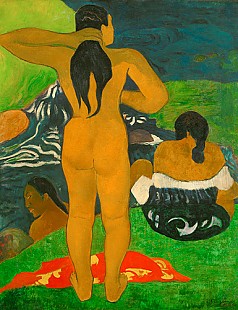 Paul Gauguin
Tahitanien women at the beach
Order Information
Paul Gauguin
Tahitanien women at the beach
Order Information
-
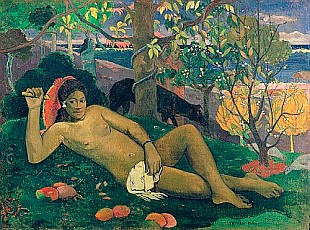 Paul Gauguin
The King's Wife
Order Information
Paul Gauguin
The King's Wife
Order Information
-
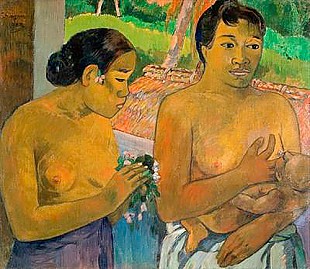 Paul Gauguin
The Offering
Order Information
Paul Gauguin
The Offering
Order Information
-
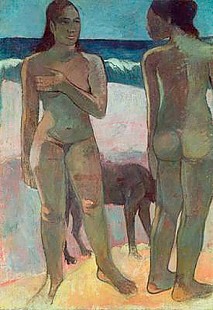 Paul Gauguin
Two Tahitian Women on the Beach
Order Information
Paul Gauguin
Two Tahitian Women on the Beach
Order Information
-
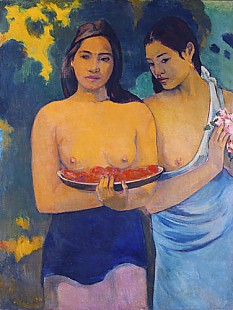 Paul Gauguin
Two women of Tahiti
Order Information
Paul Gauguin
Two women of Tahiti
Order Information
-
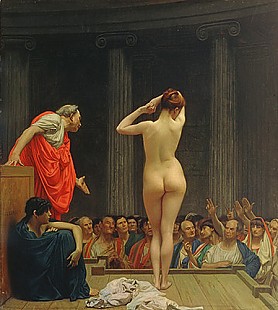 Jean-Léon Gérôme
A Roman Slave Market
Order Information
Jean-Léon Gérôme
A Roman Slave Market
Order Information
-
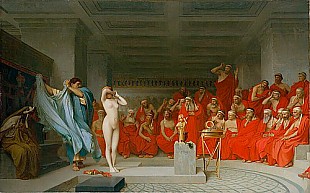 Jean-Léon Gérôme
Phryne Before the Jury
Order Information
Jean-Léon Gérôme
Phryne Before the Jury
Order Information
-
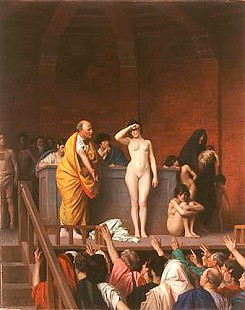 Jean-Léon Gérôme
Sale of a Slave Girl in Rome
Order Information
Jean-Léon Gérôme
Sale of a Slave Girl in Rome
Order Information
-
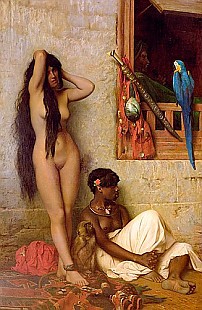 Jean-Léon Gérôme
The Slave for Sale
Order Information
Jean-Léon Gérôme
The Slave for Sale
Order Information
-
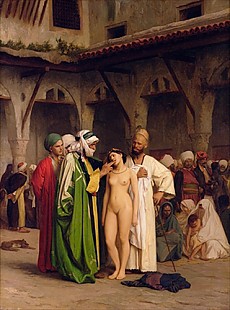 Jean-Léon Gérôme
The Slave Market
Order Information
Jean-Léon Gérôme
The Slave Market
Order Information
-
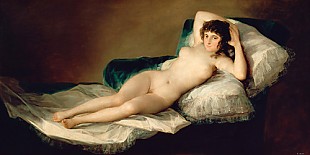 Francicso Jose de Goya
Naked Maja
Order Information
Francicso Jose de Goya
Naked Maja
Order Information
-
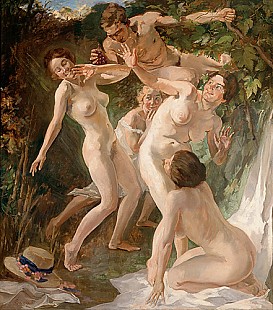 Gerardus Hendrik Grauss
The surprised bathers
Order Information
Gerardus Hendrik Grauss
The surprised bathers
Order Information
-
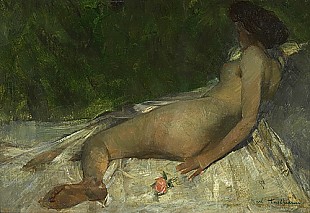 Karl Hartmann
Female nude
Order Information
Karl Hartmann
Female nude
Order Information
-
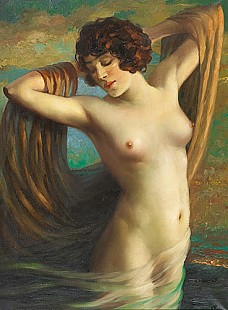 Hans Hassenteufel
Nereide
Order Information
Hans Hassenteufel
Nereide
Order Information
-
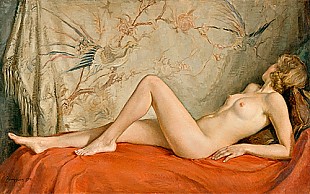 Wilhelm Hempfing
Lying female nude
Order Information
Wilhelm Hempfing
Lying female nude
Order Information
-
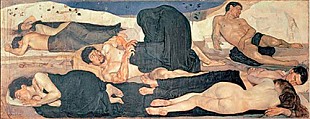 Ferdinand Hodler
Night
Order Information
Ferdinand Hodler
Night
Order Information
-
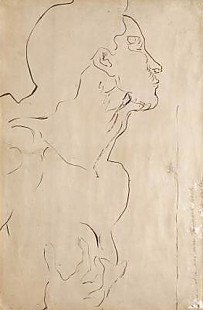 Ferdinand Hodler
Study for 'Feeling I'
Order Information
Ferdinand Hodler
Study for 'Feeling I'
Order Information
-
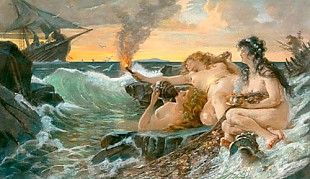 Julia Hoffmann-Tedesco
The call of the sirens
Order Information
Julia Hoffmann-Tedesco
The call of the sirens
Order Information
-
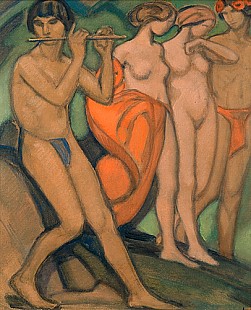 Ludwig von Hofmann
Summer
Order Information
Ludwig von Hofmann
Summer
Order Information
-
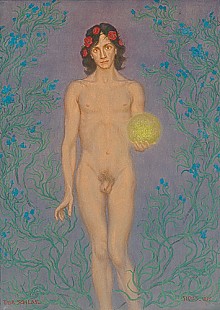 Hugo Höppener - Pseudonym Fidus
The sleep
Order Information
Hugo Höppener - Pseudonym Fidus
The sleep
Order Information
-
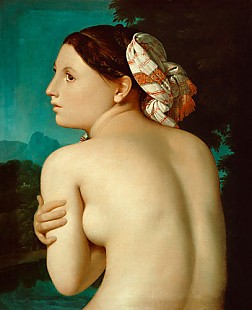 Jean Auguste Dominique Ingres
Back of a female nude
Order Information
Jean Auguste Dominique Ingres
Back of a female nude
Order Information
-
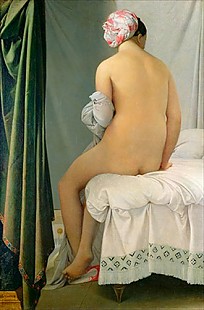 Jean Auguste Dominique Ingres
Baigneuse Valpincon
Order Information
Jean Auguste Dominique Ingres
Baigneuse Valpincon
Order Information
-
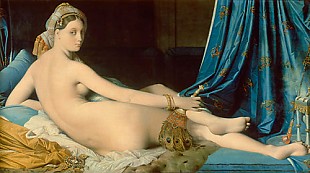 Jean Auguste Dominique Ingres
Le grande odalisque
Order Information
Jean Auguste Dominique Ingres
Le grande odalisque
Order Information
-
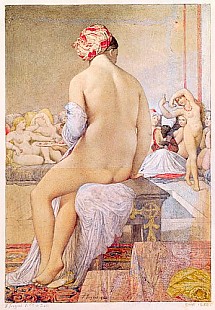 Jean Auguste Dominique Ingres
Odalisque or the Small Bather
Order Information
Jean Auguste Dominique Ingres
Odalisque or the Small Bather
Order Information
-
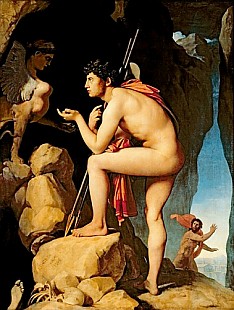 Jean Auguste Dominique Ingres
Oedipus and the Sphinx
Order Information
Jean Auguste Dominique Ingres
Oedipus and the Sphinx
Order Information
-
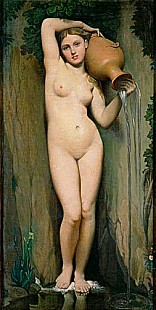 Jean Auguste Dominique Ingres
The Source
Order Information
Jean Auguste Dominique Ingres
The Source
Order Information
-
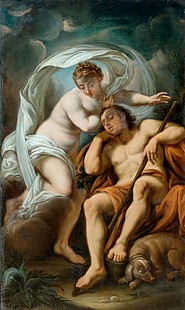 ital. Mythologiemaler
Venus and the sleeping Anchises
Order Information
ital. Mythologiemaler
Venus and the sleeping Anchises
Order Information
-
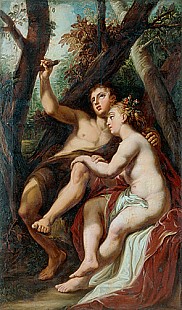 ital. Mythologiemaler
Venus in the arms of Anchises
Order Information
ital. Mythologiemaler
Venus in the arms of Anchises
Order Information
-
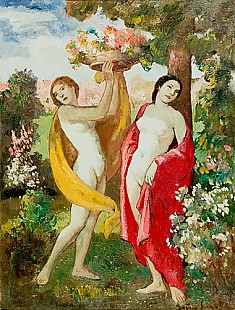 Bela Ivaniy-Grünwald
Female Nudes at a summer meadow
Order Information
Bela Ivaniy-Grünwald
Female Nudes at a summer meadow
Order Information
-
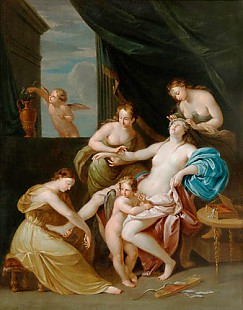 Angelica Kauffmann
Venus using the bathroom
Order Information
Angelica Kauffmann
Venus using the bathroom
Order Information
-
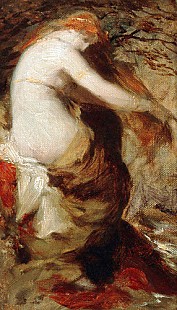 Ferdinand Keller
Naiad
Order Information
Ferdinand Keller
Naiad
Order Information
-
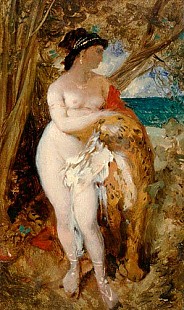 Ferdinand Keller
Nanna Risi as Ariadne
Order Information
Ferdinand Keller
Nanna Risi as Ariadne
Order Information
-
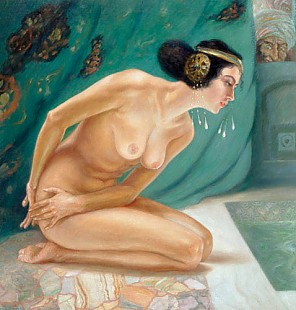 Franz Kienmayer
Susanna in bath
Order Information
Franz Kienmayer
Susanna in bath
Order Information
-
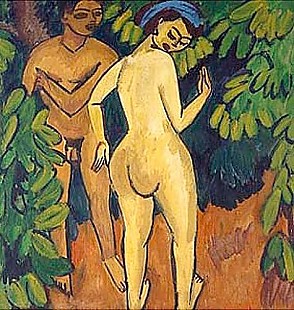 Ernst Ludwig Kirchner
Adam and Eve
Order Information
Ernst Ludwig Kirchner
Adam and Eve
Order Information
-
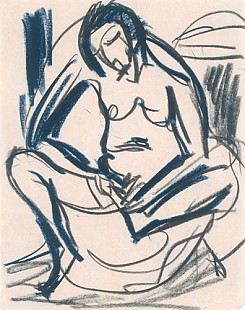 Ernst Ludwig Kirchner
Female Nude
Order Information
Ernst Ludwig Kirchner
Female Nude
Order Information
-
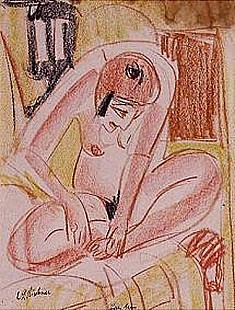 Ernst Ludwig Kirchner
Female nude squating
Order Information
Ernst Ludwig Kirchner
Female nude squating
Order Information
-
 Ernst Ludwig Kirchner
Naked woman wearin a hat
Order Information
Ernst Ludwig Kirchner
Naked woman wearin a hat
Order Information
-
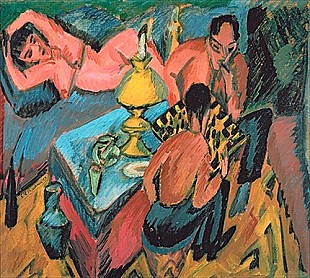 Ernst Ludwig Kirchner
Otto Müller Playing Chess
Order Information
Ernst Ludwig Kirchner
Otto Müller Playing Chess
Order Information
-
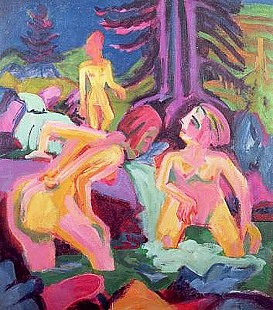 Ernst Ludwig Kirchner
Three Bathers in a Stream
Order Information
Ernst Ludwig Kirchner
Three Bathers in a Stream
Order Information
-
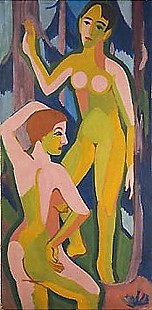 Ernst Ludwig Kirchner
Two nudes in the forest
Order Information
Ernst Ludwig Kirchner
Two nudes in the forest
Order Information
-
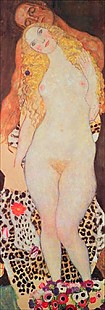 Gustav Klimt
Adam and Eve (unfinished)
Order Information
Gustav Klimt
Adam and Eve (unfinished)
Order Information
-
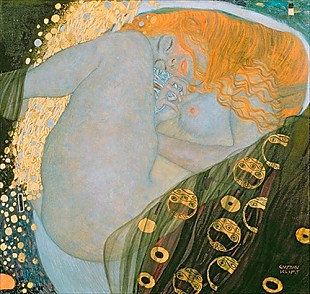 Gustav Klimt
Danae
Order Information
Gustav Klimt
Danae
Order Information
-
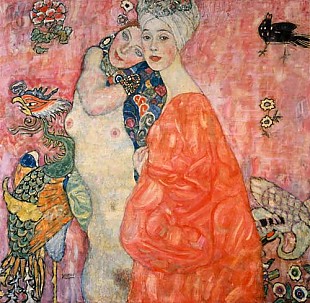 Gustav Klimt
Girlfriends
Order Information
Gustav Klimt
Girlfriends
Order Information
-
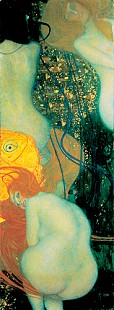 Gustav Klimt
Goldfishes
Order Information
Gustav Klimt
Goldfishes
Order Information
-
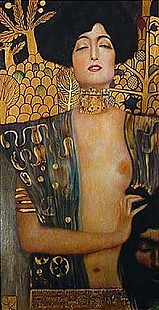 Gustav Klimt
Judith I
Order Information
Gustav Klimt
Judith I
Order Information
-
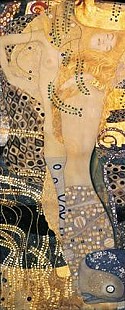 Gustav Klimt
Water snakes I
Order Information
Gustav Klimt
Water snakes I
Order Information
-
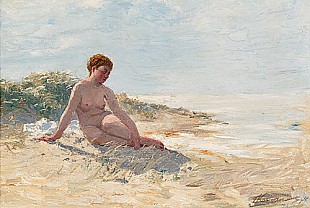 Franz Korwan
Bather at the beach of Sylt
Order Information
Franz Korwan
Bather at the beach of Sylt
Order Information
-
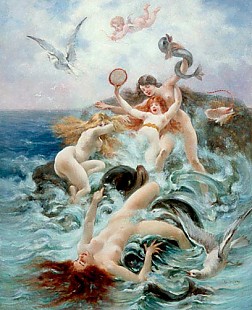 Adolphe La Lyre
Nereids
Order Information
Adolphe La Lyre
Nereids
Order Information
-
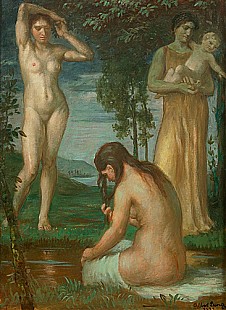 Albert Lang
Bathers
Order Information
Albert Lang
Bathers
Order Information
-
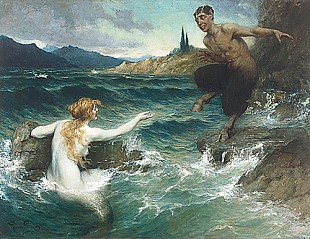 Ferdinand Leeke
Temptation of the mermaid
Order Information
Ferdinand Leeke
Temptation of the mermaid
Order Information
-
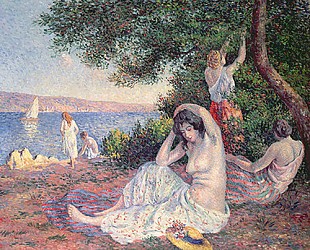 Maximilien Luce
Women Bathing
Order Information
Maximilien Luce
Women Bathing
Order Information
-
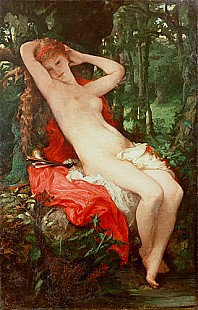 Jules Louis Machard
Diana at the spring
Order Information
Jules Louis Machard
Diana at the spring
Order Information
-
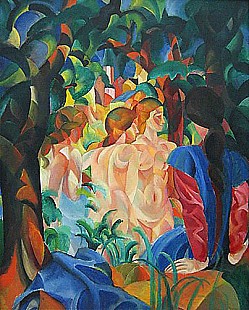 August Macke
Bathing girls
Order Information
August Macke
Bathing girls
Order Information